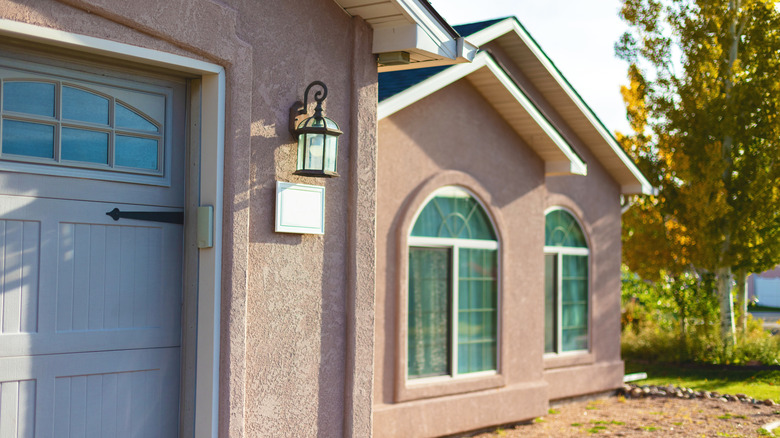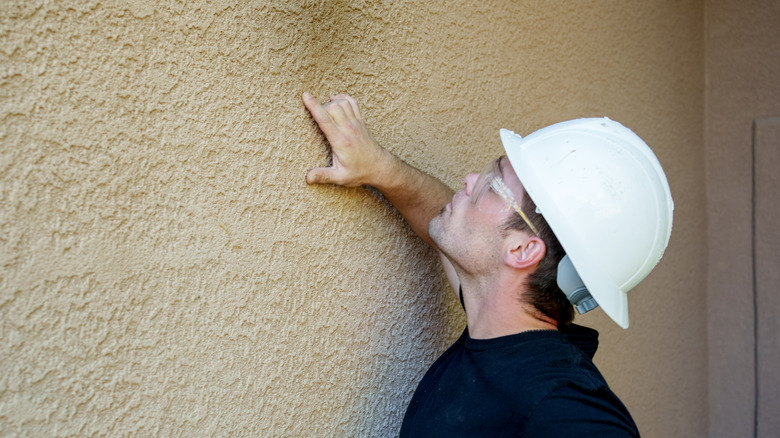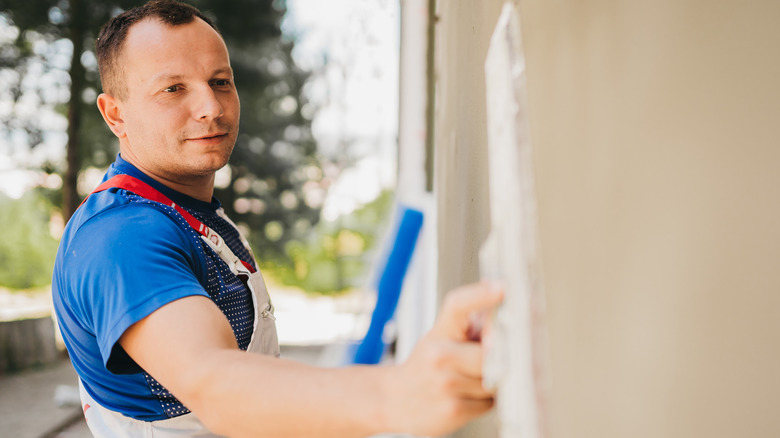How DIY Stucco Can Add Texture To Your Home
When you want to add some texture to the exterior of your home, you want something that's going to look great for many years. For example, a brick exterior could be dating your home even though it offers plenty of texture. Instead, you may want to consider stucco. One of the benefits of this classic material is that you can determine the level of texture you add. Even DIY-ers can easily create texture with stucco that's as rough or smooth as desired. And DIY-ers can even inexpensively make stucco look like brick texture or cinder blocks. If you'd prefer the stucco to look like anything but brick, you can select among extremely rough textures like lace and skip, cat face, and heavy dash. You can also select smoother textures like Santa Barbara or fine sand.
When hiring a professional to apply your stucco, expect to pay between $6 and $8 per square foot for materials and labor. If you are using a decorative finish with precise textures, you could pay more. If you decide to apply the stucco yourself, you'll save $1 to $3 per square foot.
One thing to understand with this material is that you need to know how to upkeep your stucco exterior. It requires some upkeep to prevent cracking, crumbling, and water damage. Should you ever need repair, expect to pay $8 to $50 per square foot for a pro to do the work and match the existing texture and color.
How to create a rough texture in your stucco exterior material
If you want to create one of the rougher stucco textures on your home's exterior, such as the heavy dash finish, you can do the finish layer using a sprayer. However, you need to prepare the surface first. If you're going over brick or concrete, repair any existing cracks. Then add a base bonding coat that gives the stucco something to adhere to on the home's exterior.
After the bonding coat dries, apply the scratch coat. This should be up to a ½ inch in thickness. Once it's evenly applied, use the teeth on the trowel to scratch grooves in the layer. The grooves help the next layer to adhere properly. After the scratch coat cures, which may require up to 72 hours, you then can apply the brown coat. It should be about ⅜ of an inch in thickness and should be relatively smooth. Let it wet cure or moist cure for about a week, meaning you may need to dampen it occasionally as it cures.
To apply the dash layer, you may need two or three coats for complete coverage. Use the first coat at a thin layer to create color uniformity. The second coat can deliver the rough texture. Within the sprayer, use less air pressure to generate a higher level of texture. Apply a third coat with the sprayer to adjust the level of texture if desired.
Generating a smoother textured finish for your stucco exterior
If you want just a little bit of texture in your stucco finish, the Santa Barbara finish is a good choice. The method of preparation for the Santa Barbara finish is the same as for the rougher dash layer. You'll again apply a scratch coat and add grooves to it. Then add the brown coat. In this case, though, the brown coat is important to determining the level of texture you'll end up having. Use the trowel to smooth the brown layer to the desired level of bumpiness or smoothness. Use a float to further smooth the area if desired. Allow the brown layer to cure properly before attempting to add the finish coat to generate the Santa Barbara texture.
To apply the final Santa Barbara layer, you'll use two coats. Start with a thin base coat across the entire exterior of the home. Use a pool float trowel to add this layer. Place the second coat over the top, making it as smooth as you want with the pool float trowel. This layer doesn't have to fully cover the first layer, as the idea is to create an irregular finish that's semi-smooth. The Santa Barbara finish requires a manual application to achieve the irregular, yet smooth, look. It uses stucco with extremely fine sand particles to aid in generating the smooth finish layer.


